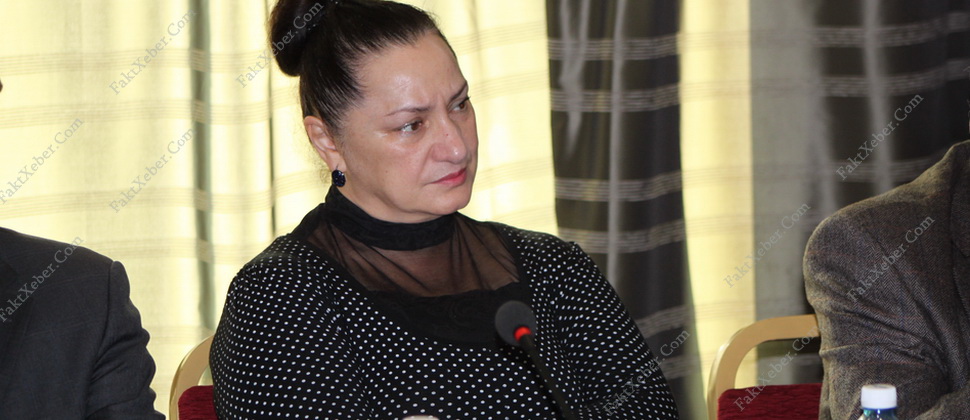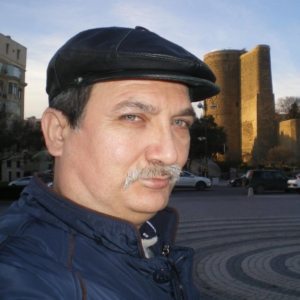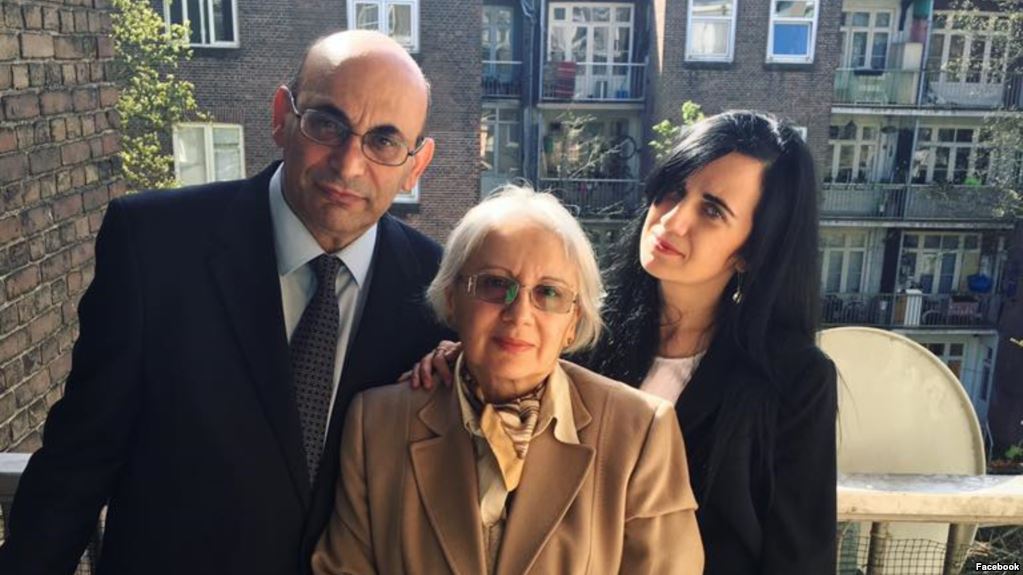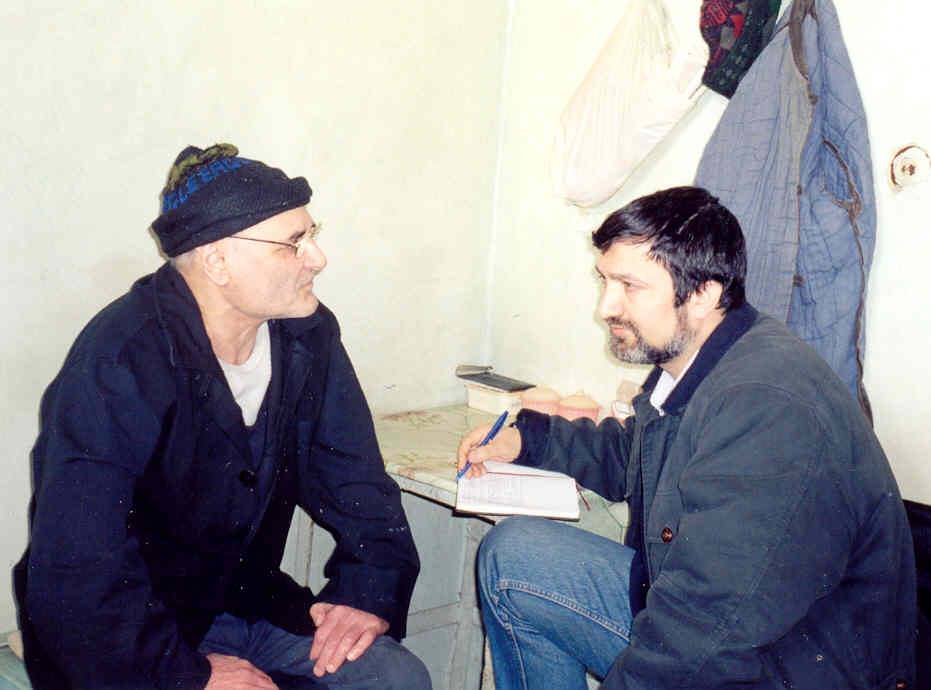The history of political prisoners’ list in Azerbaijan
Political prisoners is the most topical issue and a ‘sore point’ in Azerbaijan. The international human rights organizations, as well as the local activists and the civil society, have been always concerned about how many people are actually on this list. But the question is who compiles these lists and how?
[toggle title=”Definition of ‘political prisoner’ according to the PACE Resolution”]
A person is to be regarded as a political prisoner:
• if the detention has been imposed in violation of one of the fundamental guarantees set out in the European Convention on Human Rights and the Protocols thereof;
• if the detention has been imposed for purely political reasons without connection to any offence;;
• if, for political motives, the length of the detention or its conditions are clearly out of proportion to the offence the person has been found guilty of or is suspected of;
• if, for political motives, he or she is detained in a discriminatory manner as compared to other persons;
• if the detention is the result of proceedings which were clearly unfair and this appears to be connected with political motives of the authorities
[/toggle]
The latest list, drawn up by the local human rights activists, includes 119 names. Those are journalists, youth wing activists, politicians and most of all (86) religious activists.
It seems, this issue has been haunting Azerbaijan throughout its contemporary history, giving rise to speculations and surmises. Some say, people are sent to jail more often nowadays, whereas others claim it’s vice versa.
One of such persons is Rasul Jafarov, a young lawyer, who was a political prisoner himself. He says, in case I’m interested in the whole story from its very beginning, he won’t be of any help, since he was in his junior grade in 1991. He recommends to contact his colleague, Anar Mammadli. The latter is a couple of years older and he joined the human rights movement in the 90s. On a side note, he has been also released just recently.
“There were 3 persons who spearheaded all that – Leyla Yunus, Arzu Abdullayeva and Eldar Zeynalov,” he says.
[toggle title=”Who are those people?”]
Arzu Abdullayeva, the Head of Azerbaijani National Committee of the Helsinki Citizens’ Assembly. She was advocating the rights of war prisoners and civil hostages during the Karabakh war. Later, she was dealing with the refugees’ rights. She was a member of Azerbaijan Popular Front Party (APFP) and compiled the lists of political prisoners – politicians, journalists, military.
Leyla Yunus, the Director of the Institute for Peace and Democracy (IPD). In 1989, she co-founded the Azerbaijan Popular Front Party. Afterwards, she was engaged in human rights activity, defending the women and political prisoners’ rights. In 2014, she was arrested together with her husband, Arif Yunus, on charges of spying for Armenia. She was sentenced to 8,5 years in prison, whereas her husband was sentenced to 7 years. In December 2015, the court replaced their prison terms with suspended sentence due to aggravated health condition. In 2016, the Yunus couple was allowed to leave for the Netherlands to undergo medical treatment there.
Eldar Zeynalov, the Head of the Human Rights Center of Azerbaijan. He focuses on protection of prisoners’ rights. He has been monitoring the situation in prisons and incarceration conditions since early ‘90s.
[/toggle]

How it all started
Eldar Zeynalov’s office is huge and empty. Once it was crowded and noisy, the work was in full swing there. Whereas now, there are just wall cabinets with dusty folders and old newspapers. A lot has changed in the recent years (for example, it has become more difficult to obtain grants), it’s hard to work, it’s almost impossible. It’s no match for what it used to be in old days, in those very hard 90s that the human rights activist so zestfully recalls.
Zeynalov takes out folders with notes, letters, photos and old newspapers.
There is a letter on top of the folder, that seems to have been written with a pale marker.
It’s not a marker, a convict was writing it with blood. “Was he a political prisoners?” I wondered. “No, he was a con. It’s an old case of the ’90s. A complaint about ill-treatment.”

There were few of those, who could be referred to as political prisoners in the early post-soviet period. They appeared in 1992. Those were several supporters of former President Mutallibov. Namely, Vahid Huseynov, the KGB chief during Mutallibov’s ruling, and Sadykh Aliyev, the chief of one of the KGB departments.
The next and the hugest wave of reprisals against the political opponents started in 1993, when Heydar Aliyev regained powers. Those, who were in power in the period of the Popular Front ruling (at least some of them), were sent to jail. Among them was Rahim Gaziyev, ex-defense minister, who was accused of ceding Shushi to Armenians during the Karabakh conflict.
However, back at that time (in 1993), there were still not so many political prisoners as to draw up the lists. And the human rights movement itself was just emerging.
Eldar Zeynalov:
“Perhaps it was then that a modern tradition of Azerbaijani human rights movement was formed, which was characterized by a proclivity for protection of political victims. The problems of ordinary people, gender issue, homophobia and other phenomena had long remained behind the scenes. And no wonder, because the Popular Front members became the first defenders at that time. In other words, the first human rights movement emerged as a means of the opposition’s self-defense.
Anar Mammadli, a human rights activist and former political prisoner:
“The first political prisoners’ lists appeared in the second half of the 90s, when it came to Azerbaijan’s accession to PACE. 50-70 people were put on those lists at different times. The lists were drawn up by both, the political movements and the human rights activists. Although these lists have been existing for more than 15 years, the government has never admitted, either then or now, that there are such type of convicts in the country, in general.”

Thus, the lists first appeared in 1995 and they were compiled by the Popular Front members, whose fellows-in-arms were in prison. There were more than 50 people on those lists, most of them were either the party supporters or nonpartisan oppositionists.
However, there were actually considerably more political prisoners by that time (in Eldar Zeynalov’s words), especially given that there were individuals involved in armed rebellions. For example, Alikram Gumbatov and 20 more people, who attempted to set up Talysh-Mughan Autonomous Republic in the south of Azerbaijan.
Later, in 1994, Prime Minister Suret Huseynov and 250 of his associates, who had orchestrated a coup attempt, were sent to jail. Whereas in 1995, the special squad members, headed by Deputy Interior Ministry, Rovshan Javadov, refused to accept a ceasefire in Karabakh, which led to armed clashes in Baku. As a result, Javadov was killed and 576 of his supporters were arrested. In addition, in 1996, the first criminal case was launched against the Islamic Party (that very party, the members and leaders of which are now in prison together with the Muslim Unity members).
Eldar Zeynalov:
“Thus, by the year 2000, my individual political prisoners’ list included as many as 900 people. Though, who should be regarded as political prisoners was still a problem. The Amnesty International (AI) offers a rather broad definition, under which, many people, including those who organized an armed rebellion, could be regarded as political prisoners.”
Anyway, in 1998, there were still just 50 people on the APFP’ political prisoners’ lists.
How should they be regarded?
There are many formulations as to who should be regarded as political prisoners.
In addition, there is a problem with precise figures, because as some political prisoners are released, others are sent to prison. Thus, political prisoners in Azerbaijan is a phenomenon in constant motion.
Well, let’s discuss the criteria. At the meetings in the Council of Europe, the Azerbaijani officials often drew attention to their absence, claiming, there were no political prisoners in the country, in general.
Eldar Zeynalov:
“It was only in 2012, that the Council of Europe passed the resolution, defining a concept of political prisoner and, oddly enough, it was done through the meticulousness of our government that insisted on introducing such criteria”.
Anar Mammadli:
“The criteria set by Amnesty International are regarded as the most influential ones. Those criteria have been in effect for over 60 years and many human rights activists rely on them. The criteria offered by the Human Rights Watch are also convincing; the UN observers also formulate their assessments”.
Amnesty International uses a definition of ‘political prisoner that is a bit broader. Under it: “A political prisoner is any prisoner whose case has a significant political element: whether the motivation of the prisoner’s acts, the acts in themselves, or the motivation of the authorities to send him to prison.”
However, in Eldar Zeynalov’s words, these criteria also apply to those, who attempted to commit armed coup, and there are as many as 400 of them still staying in prison.
Meanwhile, the Council of Europe has far more stringent criteria that comprise 5 points. The 4th one reads as follows: “Those deprived of their personal liberty for terrorist crimes shall not be considered political prisoners if they have been prosecuted and sentenced for such crimes according to national legislation and the European Convention on Human Rights”.
The window to Europe
Zeynalov opens one more file, this time containing old newspapers. ‘Zerkalo’ (Mirror); ‘Bakinskie Vedomosti’ (Baku Record); ‘Realniy Azerbaijan (Real Azerbaijan)- all those newspapers no longer exist. There are some issues dated back to early and mid-2000s. There’s quite a lot to be recalled too.
The 2000s can be also referred to as a new stage. The judicial reform was carried out then. A multi-stage court was set up, where a case passed several instances. And also, the country was going to join the Council of Europe, which implied that political cases would have a chance to get to the European Court of Human Rights (ECHR) along with some other presumably unfair judgments.
The number of political prisoners in the country, in general, was dropping from year to year, starting from 1995 until 2000. Many were amnestied, be it the peaceful oppositionists or the former junior-rank armed rebels. As the U.S. State Department pointed out in its annual report, the number of political prisoners in Azerbaijan reduced and that was ‘one more step towards democracy.’
Whereas in 2001, ahead of country’s accession to the Council of Europe, the first mass pardoning of prisoners took place. The political prisoners’ lists thinned out.
And there was another reason they further thinned. The matter is that the European Court of Human Rights doesn’t consider the cases of those, who passed all the instanced before Azerbaijan’s accession to the ECHR. Therefore, over the time, there has been no mentioning of them in any lists.
For example, according to the Federation of the Human Rights Organizations of Azerbaijan, there were 107 people on the 2002 political prisoners’ list and all of them were convicted in the preceding 2 years. Nearly all of them were freed by 2011.
These days
It was then, in the early 2000s, that a tradition of people’s arrests during the election, be it parliamentary or presidential ones, which is so familiar to us nowadays, was set. Old political prisoners were released and the new ones were jailed. During the presidential election, the Federation of Human Rights Organizations enlisted as many as 51 people. According to the aforesaid organization, there were already 60 of them in 2011.
An infamous summer 2014 became a new milestone in the political prisoners’ cycle. It was then that the list compiler human rights activists – Leyla Yunus, Rasul Jafarov, Intigam Aliyev and Anar Mammadli, found themselves behind the bars.
Being the Human Rights Federation Board member, Leyla Yunus herself released a list of 108 people in July, just a few day before her arrest.

The latest list
Now there are 119 political prisoners in Azerbaijan, but this is still a nominal list. On the one hand, it includes the Muslim Unity members, who offered armed resistance to the police in Nardaran settlement last year. The latter arrived in the settlement to conduct a special operation there. As a result, 6 people, including 2 police officers, were killed. The Muslim Unity leader, Taleh Bagirov, is known for his allegations that religion shouldn’t have been separated from state and that Sharia is the best form of ruling.
On the other hand, the list doesn’t include those, who have been staying in prison since ‘90s and couldn’t lot upon the ECHR ruling.
Eldar Zeynalov:
“This list is controversial and, to a larger extent, consensual. Before the referendum, many resented the amendments to one of the articles of the Constitution related to the ‘abuse of rights’, but, in fact, there is exactly the same article in the Council of Europe Convention for the Protection of Human Rights and Fundamental Freedoms. In case of religious leaders, this principle implies that people use their freedom for violation of others’ freedom, which is actually manifested in the desire to create a religious state in Azerbaijan.”
However, some human rights activists have different opinion: no one has proved the Muslim Unity movement’s intention to commit a coups d’état. The case was tried in a closed hearing, so it’s hard to argue that Unity activists crossed the line separating a religious community from a terrorist group.
Today, the working group dealing with political prisoners comprises some renowned human rights activists, including Samir Kazimli, Khalid Bagirov, Anar Mammadli, Rasul Jafarov, and many others.
According to Rasul Jafarov, the lists are drawn up several times a year, as old political prisoners are released and the new ones appear.
“Our primary task is to collect data and study each case submitted to us,” says Rasul Jafarov. “We should find out, whether these cases meet the criteria for determining political prisoners. It often happens that a judgment rendered against a particular person hasn’t been substantiated or his/her rights have been otherwise violated, but this case isn’t actually a political one. In such case, we just try to find a good lawyer or ensure its coverage in press. Generally speaking, the cases get to us through reliable lawyers, relatives or friends, who tell us that this man, for example, is a political activist and he was arrested. We try to collect as many case-related documents as possible and consider the case.”
In Jafarov’s words, the next list will be completed and made public either at the end of February or end of March. “No unanimous decision has been made in this regard yet. The matter is that it’s expected that there will be another pardoning of prisoners on Novruz holiday, in March. So, we hope, there will be also political prisoners among the pardoned individuals.”




















